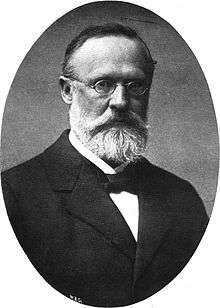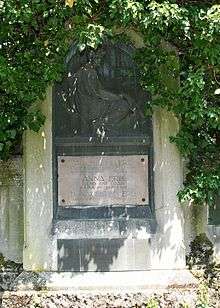Wilhelm Heinrich Erb

Wilhelm Heinrich Erb (30 November 1840 – 29 October 1921) was a German neurologist. He was born in Winnweiler, and died in Heidelberg.
Academic career

In 1864 he received his medical degree from the University of Heidelberg, where for several years he served as an assistant to pathologist Nikolaus Friedreich (1825-1882). As a young man, he also worked for a period of time under Ludwig von Buhl (1816-1880) in Munich. In 1880 Erb attained the chair of special pathology at the University of Leipzig, where he was also appointed head of its policlinic. In 1883 he succeeded Friedreich at the University of Heidelberg, where he worked until his retirement in 1907. Psychiatrist Emil Kraepelin (1856-1926) and neurologists Ernst Julius Remak (1849-1911), Max Nonne (1861-1959) and Paul Julius Möbius (1853–1907) [1] were among his better known students and assistants.
Up until his death in 1921, he served as honorary president of the Gesellschaft Deutscher Nervenärzte (Society of German Neurologists).[1]
Neurological research
Erb began his medical career in the fields of toxicology and histology, but later his interest switched to neurology, of which he became one of the 19th century's leading neurologists. He extensively used electrodiagnostic testing and demonstrated heightened motor nerve sensitivity in tetanus. He is also credited with popularizing the reflex hammer for use in neurological examinations.
He made early observations associated with syphilis to tabes dorsalis (nerve fiber and nerve cell degeneration). In his research of tabes dorsalis, he tried to find the link between this condition and syphilis. He also made contributions in his research of poliomyelitis, claudication intermittens, and progressive muscular atrophy. In 1878, he described myasthenia gravis, a condition sometimes referred to as the "Erb-Goldflam disease" (named along with neurologist Samuel Goldflam). Myasthenia gravis is a neuromuscular disorder that leads to fatigue and muscle weakness.
He was the author of over 250 medical works, including Handbuch der Elektrotherapie (a textbook on electrotherapy), and an important study on spinal paralysis. In 1891, he contributed to the foundation of the journal, Deutsche Zeitschrift für Nervenheilkunde – in its first volume, he published a survey on muscular dystrophies.[2]
Associated eponyms
- Erb-Duchenne palsy, also known as Erb's palsy or brachial plexus palsy: a muscular paralysis during childbirth; named with French neurologist Guillaume Duchenne.
- Erb-Charcot paralysis: a rare form of spinal syphilis; named with French neurologist Jean-Martin Charcot.
- Erb's point: an anatomical location 2-3 cm above the clavicle. Electrical stimulation over this region causes contraction of various arm muscles.
- Erb-Westphal symptom: a reflex anomaly seen in tabes dorsalis, named with German neurologist Karl Friedrich Otto Westphal.
- Erb's spot: an auscultatory spot in cardiology, located in the third intercostal space, three centimeter to the left, which allows an evaluation of most heart sounds and murmurs.
Selected publications
- Zur Pathologie and pathologische Anatomie peripherischer Paralysen, (Pathology and pathological anatomy of peripheral paralysis), 1867/1868.
- Handbuch der Krankheiten der peripheren cerebrospinalen Nerven (Textbook involving disorders of the peripheral cerebro-spinal nerves), 1874.
- Über eimen wenig bekannten spinalen Symptomenkomplex. Berliner klinische Wochenschrift, 1875, 12: 357-359. (Erb-Charcot disease – spastic spinal paralysis).
- Handbuch der Krankheiten des Nervensystems. (Textbook on disorders of the nervous system) two volumes. Leipzig, F. C. W. Vogel, 1876–1878.
- Ueber die spastische Spinalparalyse (Tabes dorsal spasmodique, Charcot); (On spastic spinal paralysis), 1877.[3]
- Handbuch der Elektrotherapie, (Textbook of electrotherapy), 1882.[4]
References
- 1 2 NCBI, Wilhelm Heinrich Erb (1840–1921) and his contributions to neuroscience J Neurol Neurosurg Psychiatry. Jul 2007; 78(7): 732. doi: 10.1136/jnnp.2007.115956
- ↑ Jost W H. A tribute to Wilhelm H. Erb. J Neurol 2006. 253(Suppl 1)I1–I2.I2
- ↑ WorldCat Title Ueber die spastische Spinalparalyse
- ↑ Wilhelm Heinrich Erb - bibliography @ Who Named It